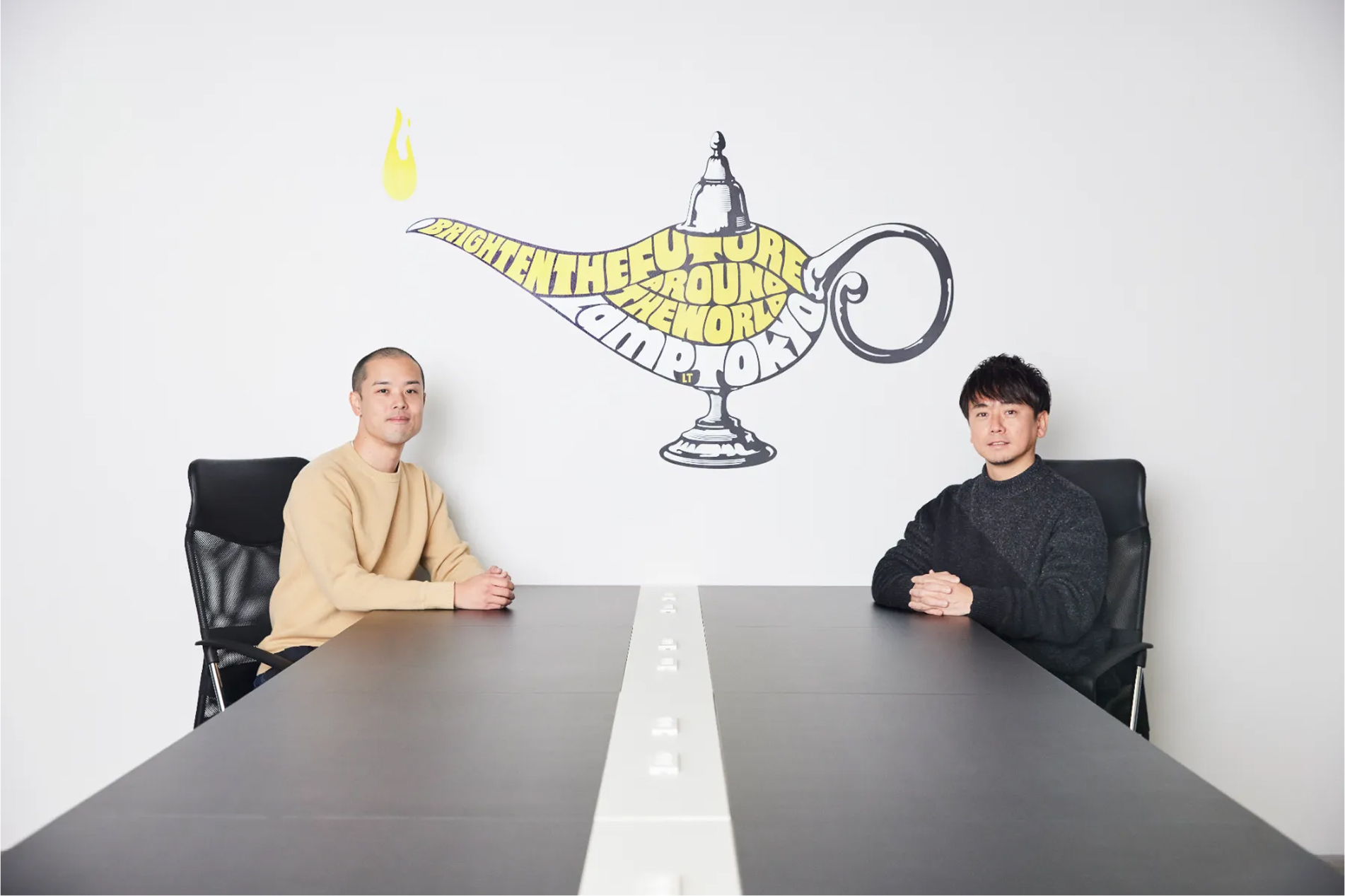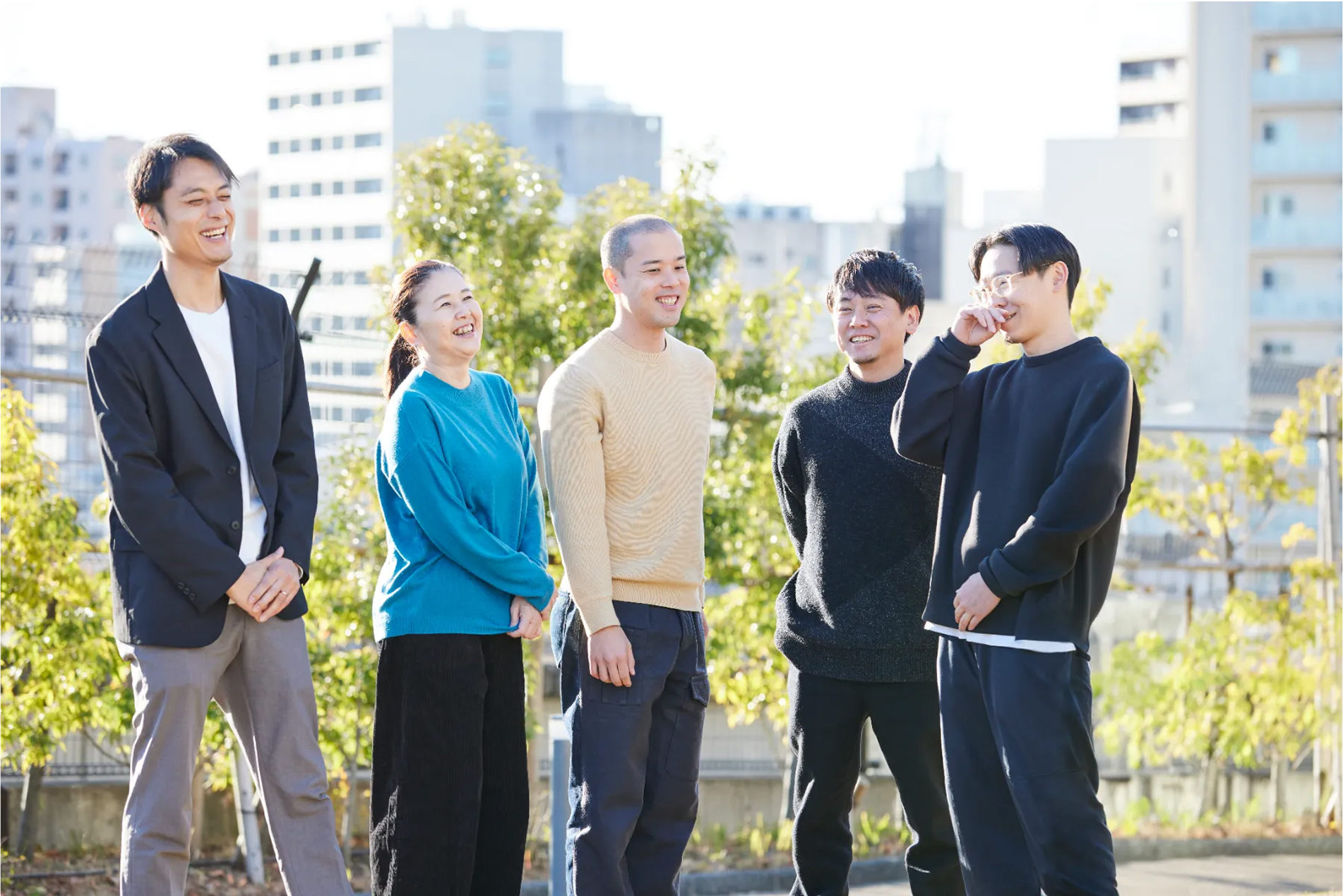A Proposal for Long-Term, Not Short-Term, Internal Branding
──First, Mr. Matsumoto, could you share how you came to consult with LampTokyo?
Matsumoto: When I assumed the position of President of Tatsumi Home-Visit Nursing through business succession, my first thought was that I wanted to make Tatsumi Home-Visit Nursing a “household name for home-visit nursing in Kanagawa Prefecture.”
Though our services were concentrated in Kanagawa, the brand image varied significantly across locations. Users didn’t necessarily perceive a unified brand under the name “Tatsumi Home-Visit Nursing.”
Moreover, our industry faces systemic challenges, such as the declining birthrate, aging population, and shortage of medical personnel, including nurses. From a recruitment standpoint as well, building a unified brand image was a top priority.
While looking for a partner who could support us in crafting a new direction and image for Tatsumi Home-Visit Nursing, I learned through an acquaintance—someone I’d met while preparing for the business succession—that Takaki at LampTokyo might be the right fit, as he had worked with this person at a previous job.

──Takaki, how did you respond to Mr. Matsumoto’s consultation?
Takaki: To be honest, I assumed that since Mr. Matsumoto came from a finance background, he would be very numbers-oriented. But after speaking with him, I realized he had a strong, long-term vision: he wanted to improve the home-visit nursing industry as a whole to help Japan confront its demographic challenges. That passion truly surprised me.
That said, there was one aspect I found slightly disjointed. Matsumoto-san’s big vision — to elevate the value of home-visit nursing — is a long-term goal. Meanwhile, he also needed to address the more immediate issue of recruiting new staff, which is a short-term goal that could potentially be solved by investing in recruitment agencies.
It felt like he was torn between these two goals. Since he was already working vigorously on the latter, we at LampTokyo felt that our role should be to support the former — to help him achieve his long-term goal of elevating the value of the home-visit nursing industry through branding.
──What specific proposals did you make?
Takaki: When considering how to approach branding for Tatsumi Home-Visit Nursing, we identified two major targets: external and internal. The external target included nurses, hospital staff, service users, and recruitment agencies. The internal target was the staff already working within Tatsumi Home-Visit Nursing.
Our initial proposal was to start with internal branding — to help existing employees understand and take pride in the new direction. If we could accomplish that, they would naturally become ambassadors of the brand, gradually spreading positive impressions of the company to the outside world.
Although it might take time, this internal-first strategy would eventually contribute to achieving the long-term branding goal and ultimately strengthen recruitment as well.
──Mr. Matsumoto, what were your thoughts upon receiving that proposal?
Matsumoto: Honestly, I was a bit surprised at first. Since I had talked about making Tatsumi a household name, I expected something flashy — like a big public-facing campaign.
Instead, they emphasized the importance of groundwork through internal branding. It made sense, and I didn’t feel any resistance to the idea. I think that’s because I had a gut feeling that Takaki was someone who would speak the truth — someone who wouldn’t just say what I wanted to hear, and who’d firmly say “you’re heading in the wrong direction” if that were the case.
Meeting the rest of the LampTokyo team, I felt that they were professionals who were truly thinking 100% about our organization. That’s why I decided to trust them and move forward positively with the plan.
Creating Videos that Bridge the Gap Between Management and Staff
──As part of the initiative to strengthen internal branding, we heard you produced several video contents. Could you share what kinds of videos were made?
Takaki: We started by formulating a comprehensive branding strategy and created three main video projects under that strategy. The first was a dialogue video between key management figures and President Matsumoto. The second was a roundtable discussion video featuring nurses active in the field along with President Matsumoto. And the third was a documentary-style video following a day in the life of a nurse working on-site.
──What was the objective of the first dialogue video?
Naomichi: Since the new president had come in from outside the company, many staff members were likely feeling anxious or uncertain. We wanted to clearly communicate internally about the current state of the company and the intentions behind the business succession. That’s why we created this dialogue video to present both the situation and President Matsumoto’s character.
Besides the dialogue with former president Mr. Sezaki, we also created two more dialogue videos. The second one featured Noriko Shimazu from Japan Search Fund Platform, a shareholder of Tatsumi Home Nursing and a supporter of Mr. Matsumoto since before the succession. This helped show Matsumoto’s thinking and personality as a leader.
The third featured Ms. Honma, who also appears in this interview article, as a representative of the on-site nurses, having a conversation with Mr. Matsumoto. By presenting this discussion between someone close to the frontline and the new president, we aimed to help frontline staff better understand Matsumoto’s thoughts.
──What was the aim of the second roundtable discussion video?
Naomichi: We gathered active nurses for a casual and honest talk with President Matsumoto. While this video had a strong outer branding purpose—to show the company’s atmosphere externally—it also included an internal branding element by involving employees in the production process.
Also, since President Matsumoto had just launched new Mission, Vision, and Values (MVV), we had the team discuss how they felt about them and how they might act going forward. This helped embed the MVV into their daily awareness.
──How were these dialogue and roundtable videos received?
Matsumoto: We got a lot of positive feedback from inside the company. Comments like, “Now I understand what the new president wants to do,” or “He seems to be steering the company in a good direction,” were common.
Honestly, I had felt some distance between myself and the staff after I became president. Many probably didn’t even know my name or face. But these videos helped close that gap and made people feel like we’re working together as partners.
Interestingly, even though the first dialogue video was made with internal audiences in mind, it resonated externally as well. Especially with recruitment agents—the feedback from them was outstanding. One agent even circulated the video within their company, and the number of views jumped the same day.
People often associate business successions or M&As with being cold and money-driven. But after watching the video, many said, “It’s nice to see a warm and thoughtful transition like this.” Our referrals from recruitment agents now rank among the top nationwide, which has been a huge help in hiring.
また、最初に制作した対談動画はインナーターゲットを意識して作られたものですが、アウターにもすごく響いた部分があって。特に、人材紹介エージェントからの評判がとてもよかったですね。弊社を担当してくれているエージェントにこの対談動画を共有したら、向こうの社内でも展開してくれたみたいで、その日のうちに再生数が顕著に伸びました。
事業承継やM&Aに対して、どこかお金目的で冷たいイメージを持っている人も多いかと思うのですが、動画を見て「こういうあたたかい形の事業承継もあるんだ」と感じてもらえたみたいです。動画を見てくれた人材紹介エージェントからの弊社への紹介数は、全国でもトップクラスらしく、採用面にも非常に貢献してくれていますね。
──Could you tell us about the third video, the documentary featuring an on-site nurse?
Naomichi: We followed a nurse through a typical day visiting patients as part of Tatsumi’s home nursing care. The format was documentary-style, with the aim of broad outer branding—something that would appeal to a wide audience.
We included interviews with patients and medical professionals, not just footage of the nurse working. That helped create a more dramatic, emotional film.
Matsumoto: I’ve already watched this video five times, and every time I cried. While it was made for external audiences, our internal staff, especially the nurses, said it really helped them feel the value of their work. It hit home.
Takaki: President Matsumoto has always said he wants to raise the social status and recognition of home nursing. If this video contributes to that even a little, we’re truly honored.
Creating Radio Programs to Reach More People
より多くの人々にタツミ訪問看護を知ってもらうために、ラジオ番組を制作
──We heard you also produced a radio commercial and a radio show. Can you tell us more?
Naomichi: We realized that many people still don’t know what home nursing actually is. To raise awareness while also promoting Tatsumi Home Nursing, we decided to use a medium with wider reach—radio.
In Kanagawa Prefecture, where Tatsumi operates, FM Yokohama has very high listener rates. So we thought it would be an excellent match in terms of regional relevance and accessibility.
We aired a radio commercial and also secured a weekly 10-minute segment on FM Yokohama’s “Lovely Day” program every Monday at 11 a.m. Over a three-month period, the first month featured President Matsumoto discussing the basics of home nursing. The second month had frontline employees appear, and the third month served as a wrap-up of everything covered.
──How was the response?
Honma: It was tremendous. We got phone calls, letters, and in-person comments from care managers and patients’ families saying, “I heard your radio program!”
Nishimura: Even at new business meetings, people would say, “Hey, I’ve heard your show.” It helped raise awareness among people who had never heard of us. It really confirmed how well radio and our service aligned.
Also, having our staff participate gave them a sense of ownership—they felt like they were representing the company. So from an internal branding perspective too, it was a powerful initiative.
また、従業員の方々にも番組に出演してもらったことで「自分たちがタツミを代表しているんだ」という参加意識を持ってもらえた部分もあり、そういう意味では、インナーへのポジティブな影響も大きな施策だったなと感じています。
──Ms. Honma, we heard you appeared not just on radio but also in videos with President Matsumoto. Were you nervous?
Honma: At first I had no idea what to expect, having never done anything creative like this before. But surprisingly, I wasn’t nervous. That’s thanks to the LampTokyo team. They created a relaxed environment and guided us naturally. I’m really grateful—they’re amazing professionals.
Nishimura: LampTokyo took the time to truly understand our industry and the nature of home nursing. They approached the work from the ground up, with sincere dedication. That’s why our staff could speak confidently and convey meaningful stories—it’s all because of how LampTokyo worked with us.
Spreading the Importance of Internal Branding to the World
──Looking back on the initiatives, what are your honest reflections from the team at Tatsumi Home-Visit Nursing?

Matsumoto: This experience has deeply cemented the importance of internal branding for us. Honestly, even if I were to be reborn multiple times, I’d choose to do internal branding every time (laughs). I recently gave a lecture at a university and emphasized to the students, “Internal branding is incredibly important!”
Nishimura: There were certainly risks in having internal staff appear in videos and on the radio. Some might question, “Should nurses really be stepping into the spotlight like this?” Others in our industry—especially smaller operators—might think, “They can only do this because they have a marketing budget.” But the fact that we received no negative feedback tells me that our message truly resonated through the content we created.
Naomichi: To create content that genuinely moves people, it has to reflect the thoughts and feelings of everyone involved—from the staff to patients and medical professionals. The success of these productions was thanks to the strong sense of purpose everyone at Tatsumi Home-Visit Nursing brought to the table.
Honma: We didn’t hear any negative feedback from within the company, either. On the contrary, we heard comments like, “Now that we have a new president, it’s the perfect chance to start something fresh,” or “Wow, I didn’t know our company could do this!” It wasn’t just younger staff—our more seasoned team members were also excited, which really made me happy.
─Lastly, as leaders of your respective companies, what are your thoughts on future challenges and aspirations?
Takaki: With Matsumoto-san’s appointment as president, Tatsumi Home-Visit Nursing entered a critical phase—as if it were a completely new company. At such times, most companies focus on reorganizing their core business or operations, and branding tends to be overlooked.
That’s why, when Matsumoto-san initially approached us, it was inspiring to see how seriously he took branding. For us at LampTokyo, it was a rare and meaningful opportunity to help a company establish its identity from the ground up during such a pivotal moment.
LampTokyo has always strived to contribute to solving social issues through branding and marketing. Supporting Matsumoto-san’s vision of addressing social challenges through his business is something we’re truly honored to be part of, and we hope to continue helping in any way we can.
Matsumoto: We’re sincerely grateful. I believe there are many small and medium-sized businesses like ours struggling with branding. In today’s social media-driven world, there’s a tendency to focus only on gaining attention. But thanks to LampTokyo, we’ve come to appreciate how crucial it is to build a grounded, inward-focused brand that aligns the hearts of internal members.
As one of LampTokyo’s fans, I’m excited to see them create more stories that help spread this approach to the world.

Photography by: Takuro Ogawa






